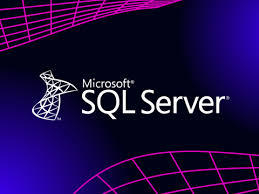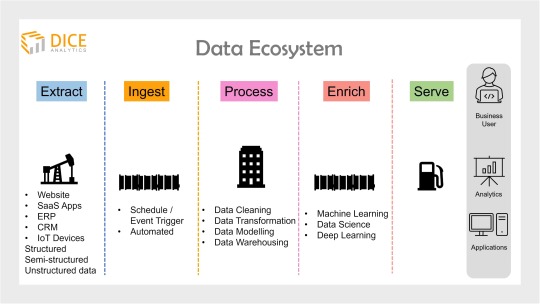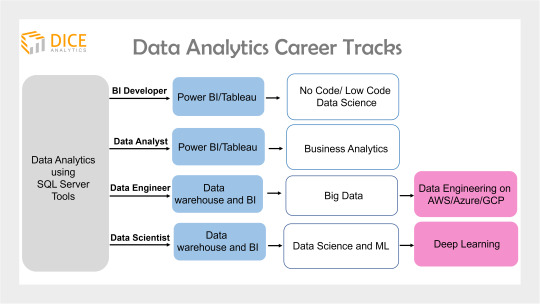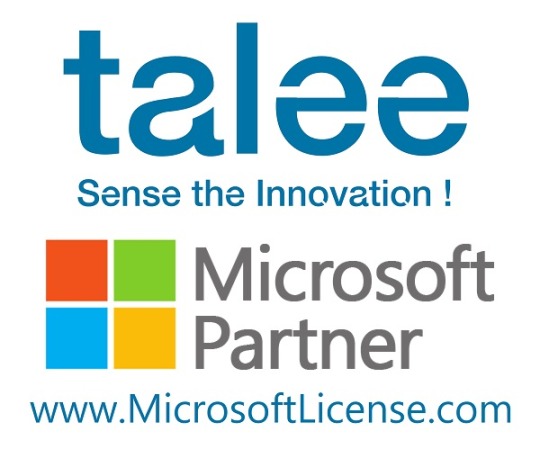#ssis and ssrs
Explore tagged Tumblr posts
Text
ssrs training
unleash the potential of data with our power bi training. join dynamic online classes and become a master in business analytics. enroll now!
ssis ssrs ssas certification , ssrs training , ssrs course , microsoft ssis certification , ssrs certification
#ssis ssrs ssas certification#ssrs training#ssrs course#microsoft ssis certification#ssrs certification#msbi certification#msbi training#power bi certification#power bi tutorial#sql server tutorial#sql server certification#msbi tutorial
2 notes
·
View notes
Text
msbi training | ssis course content Excel in Business Intelligence with our MSBI Certification Training online. Specialized in SSIS, SSAS, SSRS. Elevate your skills for success.
msbi certification | msbi course , ssis ssrs ssas certification , msbi tutorial | msbi online training , msbi training | ssis course content , ssrs certification cost | ssrs certification
#msbi certification | msbi course#ssis ssrs ssas certification#msbi tutorial | msbi online training#msbi training | ssis course content#ssrs certification cost | ssrs certification .#data analytics#power bi certification#power bi certification cost#sql#power bi course#power bi#power bi course fees#power bi online training#msbi#education
1 note
·
View note
Text

Crystal Reports Migration to Jasper! OdiTek's Jaspersoft reporting, migrating, consulting services enables enterprise with data-driven decision making.
#crystal reports#jasper OLAP#SSIS Reporting tools#Jasper AD HOC Reports#Jasper views and domains#SSRS reporting tools
0 notes
Text

Greetings from Ashra Technologies we are hiring
#ashra#ashratechnologies#ashrajobs#ashrahiring#ashrarecruiting#jobs#hiring#recruiting#recruitingpost#ashrapost#linkedin#linkedinlearning#linkdinpost#linkedincommunity#linkedinconnections#linkedinarticle#linkedincontent#linkedinengagement#ssis#ssrs#ssisjob#ssishiring#ssisrecruitement#insta#instagram#inmstapost#instahiring#instarecruiting#instaviral
0 notes
Text
sql server integration services , sql server analysis services , ssis in sql server , sql ssrs , Online IT Solutions | Piyush Agrawal
Online IT Solutions offers SQL Server services and support. Contact us right now for qualified assistance.
#sql server integration services#sql server analysis services#ssis in sql server#sql ssrs#Online IT Solutions | Piyush Agrawal
1 note
·
View note
Text
SQL Server: A Comprehensive Overview
SQL Server, developed by Microsoft, is a powerful relational database management system (RDBMS) used by organizations worldwide to manage and store data efficiently. It provides a robust platform for database operations, including data storage, retrieval, security, and analysis SQL Server is known for its scalability, reliability, and integration with other Microsoft services, making it a preferred choice for businesses of all sizes.
Key Features of SQL Server
1. Scalability and Performance
SQL Server is designed to handle large-scale databases while maintaining high performance. With features like in-memory processing, indexing, and optimized query execution, it ensures fast data retrieval and efficient processing, even with massive datasets.
2. Security and Compliance
Data security is a critical concern, and SQL Server addresses this with advanced security features such as:
Transparent Data Encryption (TDE): Encrypts the database at rest.
Row-Level Security (RLS): Restricts access to specific rows within a table based on user permissions.
Dynamic Data Masking (DDM): Protects sensitive data by masking it during query execution.
Always Encrypted: Ensures data remains encrypted both at rest and in transit.
3. High Availability and Disaster Recovery
SQL Server ensures continuous availability through features such as:
Always On Availability Groups: Provides failover support and high availability for critical databases.
Database Mirroring and Log Shipping: Helps maintain real-time data replication and backup solutions.
Backup and Restore Capabilities: Ensures data recovery in case of system failures.
4. Business Intelligence and Data Analytics
SQL Server includes built-in tools for business intelligence (BI) and analytics, allowing organizations to gain insights from their data. Features include:
SQL Server Analysis Services (SSAS): Enables data mining and multidimensional analysis.
SQL Server Integration Services (SSIS): Facilitates data extraction, transformation, and loading (ETL).
SQL Server Reporting Services (SSRS): Allows for the creation of interactive reports and dashboards.
5. Integration with Cloud and AI
SQL Server seamlessly integrates with Microsoft Azure, enabling hybrid cloud solutions. Additionally, it supports artificial intelligence (AI) and machine learning (ML) capabilities, allowing users to perform predictive analytics and automate decision-making processes.
SQL Server Editions
Microsoft offers SQL Server in different editions to cater to various business needs:
Enterprise Edition: Designed for large-scale applications with high performance and security requirements.
Standard Edition: Suitable for mid-sized businesses with essential database functionalities.
Express Edition: A free version with limited features, ideal for small applications and learning purposes.
Developer Edition: Offers full Enterprise Edition capabilities but is licensed for development and testing only.
SQL Server vs. Other RDBMS
While SQL Server is a leading database management system, it competes with other RDBMS like MySQL, PostgreSQL, and Oracle Database. Here’s how it compares:
Ease of Use: SQL Server has a user-friendly interface, particularly for Windows users.
Security Features: Provides robust security compared to MySQL and PostgreSQL.
Integration with Microsoft Ecosystem: Works seamlessly with tools like Power BI, Azure, and Office 365.
Licensing Costs: SQL Server can be more expensive than open-source databases like MySQL and PostgreSQL.
Conclusion
SQL Server is a powerful and versatile database management system that supports businesses in managing their data efficiently. With features like scalability, security, high availability, and cloud integration, it remains a top choice for enterprises looking for a reliable RDBMS. Whether used for small applications or large-scale enterprise systems, SQL Server continues to evolve with new advancements, making it an essential tool for modern data management.
0 notes
Text
Understanding SQL Server

Introduction
SQL Server is a relational database management system (RDBMS) developed by Microsoft. It is designed to store and manage large volumes of data efficiently while ensuring high performance, scalability, and security. This article delves into the key features, architecture, and benefits of SQL Server, along with best practices for database management.
Key Features of SQL Server
1. Relational Database Management
At its core, SQL Server uses a relational database model, allowing data to be organized in tables that can be easily accessed and managed. Tables are structured into rows and columns, making it straightforward to retrieve and manipulate data using SQL (Structured Query Language).
2. Scalability and Performance
SQL Server is built to handle varying loads, from small applications to large enterprise-level systems. Its architecture supports horizontal and vertical scaling, allowing businesses to expand their database as their data needs grow. Features like partitioning, indexing, and in-memory processing enhance performance, making SQL Server suitable for high-transaction environments.
3. Security Features
Security is paramount in database management, and SQL Server offers robust security mechanisms. Role-based security, encryption (both at rest and in transit), and advanced auditing features help safeguard sensitive data against unauthorized access and breaches.
4. High Availability and Disaster Recovery
SQL Server provides several options for high availability and disaster recovery. Techniques such as Always On Availability Groups, database mirroring, and backup/restore strategies ensure that data remains accessible even in the event of hardware failures or disasters.
5. Integration Services (SSIS)
SQL Server Integration Services (SSIS) is a powerful data integration tool that allows users to extract, transform, and load (ETL) data from various sources. This capability is crucial for data warehousing and business intelligence applications, enabling organizations to consolidate data from different platforms.
6. Reporting Services (SSRS)
SQL Server Reporting Services (SSRS) provides comprehensive tools for generating, managing, and delivering reports. Users can create interactive reports, dashboards, and visualizations, allowing decision-makers to derive insights from data effectively.
7. Analysis Services (SSAS)
SQL Server Analysis Services (SSAS) offers analytical capabilities, allowing users to perform multidimensional analysis and data mining. It supports the creation of OLAP cubes and complex analytical models, which facilitate advanced data analysis and reporting.
SQL Server Architecture
Understanding SQL Server architecture is essential for database administrators and developers. The architecture can be broadly divided into several components:
1. Database Engine
The database engine is the core component of SQL Server, responsible for managing data storage, retrieval, and processing. It includes the query processor, storage engine, and transaction log management.
2. SQL Server Instance
An instance is a separate installation of SQL Server. Multiple instances can run on a single server, allowing for isolation and management of different applications or environments.
3. Databases
Each instance can contain multiple databases. A database is a collection of related data, organized in a structured format. SQL Server supports multiple database types, including user-defined and system databases.
4. Data Files and Log Files
SQL Server uses data files (.mdf and .ndf) to store data and log files (.ldf) to maintain transaction logs. Data files hold the actual data, while log files track all transactions, ensuring data integrity and facilitating recovery.
Benefits of SQL Server
1. Ease of Use
SQL Server's user-friendly interface and comprehensive documentation make it accessible to both novice and experienced database administrators. Tools like SQL Server Management Studio (SSMS) provide intuitive graphical interfaces for managing databases.
2. Strong Community Support
As a widely used database management system, SQL Server has a robust community of users and developers. This community contributes to a wealth of online resources, forums, and third-party tools, providing support for troubleshooting and optimization.
3. Integration with Other Microsoft Products
SQL Server seamlessly integrates with other Microsoft products, such as Excel, Power BI, and Azure. This integration enhances data analysis and visualization capabilities, allowing organizations to leverage their data effectively.
4. Comprehensive Development Tools
SQL Server offers a variety of development tools, including Visual Studio integration, T-SQL for writing queries, and APIs for connecting applications. These tools facilitate efficient database development and management.
Best Practices for SQL Server Management
To ensure optimal performance and security, consider the following best practices:
1. Regular Backups
Implement a robust backup strategy, including full, differential, and transaction log backups. Regular backups help protect against data loss and ensure quick recovery in case of failures.
2. Performance Monitoring
Utilize SQL Server’s built-in monitoring tools to track performance metrics, identify bottlenecks, and optimize queries. Tools like SQL Server Profiler and Performance Monitor can provide insights into query performance and system health.
3. Security Management
Regularly review and update security settings, including user permissions and roles. Implement encryption for sensitive data and use auditing features to monitor access and changes.
4. Indexing Strategy
Develop a sound indexing strategy to enhance query performance. Regularly review and optimize indexes to ensure efficient data retrieval without unnecessary overhead.
5. Documentation and Change Management
Maintain thorough documentation of database structures, configurations, and changes. This practice aids in troubleshooting, compliance, and knowledge sharing among team members.
0 notes
Text
MSBI Tutorial Guide For Beginners
In the rapidly evolving world of data analytics & business intelligence, MSBI stands out as a powerful tool for transforming raw data into actionable insights. If you are new to the field or looking to enhance your skills, this MSBI Tutorial Guide For Beginners will provide a comprehensive overview of what MSBI is & how it can benefit your career. We will also touch on available resources, such as MSBI online training & certification courses, to help you get started.
What is MSBI?
MSBI, or Microsoft Business Intelligence, is a suite of tools provided by Microsoft designed to help businesses analyze & visualize their data effectively. The primary components of MSBI include SQL Server Integration Services (SSIS), SQL Server Analysis Services (SSAS), & SQL Server Reporting Services (SSRS). These tools work together to provide a complete solution for data extraction, analysis, & reporting.
SQL Server Integration Services (SSIS)
SSIS is responsible for data integration & transformation. It allows users to extract data from various sources, transform it into a format suitable for analysis, & load it into a destination database or data warehouse. For instance, you might use SSIS to pull data from multiple sources, clean & format it, & then load it into a SQL Server database for further analysis.
SQL Server Analysis Services (SSAS)
SSAS is used for data analysis & building OLAP (Online Analytical Processing) cubes. These cubes enable complex calculations, trend analysis, & data summarization, making it easier to generate business insights. SSAS helps in creating multidimensional structures that provide fast query performance & in depth analysis.
SQL Server Reporting Services (SSRS)
SSRS is the reporting component of MSBI. It allows users to create, manage, & deliver interactive & printed reports. With SSRS, you can design reports using a variety of formats & data sources, schedule report generation, & even integrate reports into web applications.
MSBI Tutorial Guide For Beginners
If you are just starting out with MSBI, it can be overwhelming to navigate through its components. This MSBI Tutorial Guide For Beginners aims to break down the basics & offer a step by step approach to mastering each component.
Getting Started with MSBI
To learn MSBI software, one should follow a systematic approach. Described below is best suitable way to master this platform -
Understand the Basics: Before diving into technical details, familiarize yourself with the core concepts of MSBI. Learn about data warehousing, ETL (Extract, Transform, Load) processes, & reporting.
Set Up Your Environment: Install SQL Server & the associated tools (SSIS, SSAS, SSRS). Microsoft provides comprehensive documentation & tutorials to help you get started with installation & configuration.
Learn SQL Basics: Since MSBI relies heavily on SQL, having a good grasp of SQL basics is crucial. Focus on writing queries, understanding joins, & working with stored procedures.
Diving Deeper into SSIS: SSIS is the foundation for data integration & ETL. Begin by learning how to create & manage SSIS packages, which are used to perform data extraction, transformation, & loading tasks. Explore data flow tasks, control flow tasks, & various transformations provided by SSIS.
Exploring SSAS: For SSAS, start with creating & deploying OLAP cubes. Learn how to design dimensions & measures, & understand the basics of MDX (Multidimensional Expressions) queries. Dive into data mining & create data models that help in generating insightful reports.
Mastering SSRS: SSRS is all about creating reports. Begin by designing basic reports using the Report Designer tool. Learn how to use datasets, data sources, & report parameters. Experiment with different types of reports, such as tabular, matrix, & chart reports.
MSBI Online Training & Certification
To gain a deeper understanding of MSBI & enhance your skills, consider enrolling in MSBI online training programs. These courses offer structured learning paths, practical exercises, & real world examples to help you grasp the intricacies of MSBI components.
Choosing the Right MSBI Certification Course
An MSBI Certification Course can significantly boost your credentials. Look for courses that cover all aspects of MSBI, including SSIS, SSAS, & SSRS. Certification can validate your skills & make you a more competitive candidate in the job market.
Benefits of MSBI Certification
Obtaining an msbi training certificate demonstrates your expertise in business intelligence tools & techniques. It can open doors to advanced roles in data analysis, reporting, & business intelligence. Many organizations value certified professionals who can deliver actionable insights & drive business decisions based on data.
Final Comment
In summary, MSBI is a robust suite of tools that empowers businesses to turn data into valuable insights. For beginners, this MSBI Tutorial Guide For Beginners provides a foundational understanding of what MSBI is & how to get started. By exploring each component—SSIS, SSAS, & SSRS—you can build a comprehensive skill set in business intelligence.
Investing in MSBI online training & obtaining an MSBI Certification Course can further enhance your skills & career prospects. Whether you are aiming to analyze data more effectively, create insightful reports, or manage complex data transformations, mastering MSBI tools can be a significant step towards achieving your professional goals.
People Also Read : What is UiPath? UiPath Tutorial For Beginners
0 notes
Text
SQL Server is quickest way to your Data Analytics journey, says expert
SQL server tools get you through the whole, end-to-end ‘data ecosystem’; where you learn data engineering, data warehousing, and business intelligence all in single platform
Microsoft SQL Server is currently leading the RDBMS market with its tremendously diverse tools and services for data analytics. Whether it’s data management, analysis or reporting, you get all in one package, that too for free.
Given that SQL server provides an end-to-end exposure to the whole data ecosystem, learning SQL server is the quickest path to your data analytics journey..
Note: This career advice is for newbies just starting their analytics journey, as well as for technical geeks who wish to opt for SQL server job roles.
Table of contents
Data Ecosystem and SQL Server Tools
How can SQL Server help me begin a Career in Data Analytics?
Career Tracks to target a job role
Learn SQL Server Tools
Watch Webinar!
Data Ecosystem and SQL Server tools

Data ecosystem is the backbone of any organization’s data analytics project.
Simply put, a data ecosystem documents and presents infrastructure and applications for data storage and processing.
Any data ecosystem portrays four to five stages of data, depending on the organization’s objectives.
Starting off, a data expert always needs to collect data from the vast sources of the organization. This includes, website data, SaaS applications, IoT devices, CRM, ERP etc.
Next, all of the data from diverse sources is gathered over a common place through a process called ingestion.
Integrated on a single database, this data needs to be cleaned, transformed and organized into a universal format (data harmonization) to avoid misalignment across the ecosystem.
This process is called data warehousing (aka data engineering).
Optional is to further enrich data using machine learning technology. One of the main data science job roles is to apply predictive analytics at this stage.
Finally, at the last stage, data is analyzed and presented to business users for value driving and decision making. A BI developer or engineer is specialized to handle data visualization at this stage.
SQL Server tools and services offer a low code environment to all of the above steps and therefore quickly and easily helps to build an end-to-end data ecosystem for an organization.
The tools and services can be broadly classified as data management and business intelligence (BI) functionalities.
For data management, SQL Server provides SQL Server Integration Services (SSIS), SQL Server Data Quality Services, and SQL Server Master Data Services.
SQL Server provides SQL Server Data tools for building a database. And for management, deployment, and monitoring the platform has SQL Server Management Studio (SSMS).
SQL Server Analysis Services (SSAS) handle data analysis.
SQL Server Reporting Services (SSRS) are used for reporting and visualization of data.
Earlier known as the R services, the Machine Learning Services came as part of SQL Server suite in 2016 and renamed afterwards.
How can SQL Server help me begin a Career in Data Analytics?
When you learn SQL Server, it exposes you to the complete data ecosystem. This helps you in your career advancement in two ways.
Access to the vast SQL Server jobs
Microsoft SQL Server currently stands at 3rd rank (after Oracle and MySQL) in the world’s most used commercial relational databases. This is because Microsoft offers an intensely feature-rich version of SQL Server for free.
This makes SQL server skills one of the most in-demand across the data analytics ecosystem.
Tip: For newbies, and those with career transitions, if you want to land on an analytics job quickly, learning SQL server tools is a smart idea since the job market is lucrative.
Further, once in, as you move along in your career we recommend growing your skill set and ascending towards more specific job roles, for example, data engineer and BI developer.
Career Tracks to target a job role

Once you get a grab of the end-to-end data analytics ecosystem, now it’s a step to move forward in your analytics journey.
But why?
Data analytics is a broad field, and carries lucrative job opportunities in the form of various job roles available in the market.
Moreover, given a myriad of job roles, you can opt for a career in the field of your interest.
What are the career tracks when I work with SQL server?
Become a Data Engineer
Once getting to know what data engineering holds, you can now opt for a vendor specific data engineering skills.
For example, Teradata is a market leader in on-premise data warehousing solutions. Learning data engineering on Teradata will offer bright career prospects in the data analytics field.
While SQL Server and Teradata RDBMS have a data architecture built for small scale data, when it comes to data volumes up to petabytes size, these solutions don’t work.
Thus a data engineer can move to learning big data technology that holds even brighter career prospects (read about the blooming big data market forecast).
Become a BI Developer/BI Engineer
This job role narrows to the data visualization, and reporting only. A BI developer is expert in BI tools such as Power BI and Tableau.
As a next step, a BI Developer can also opt for no code/low code Data Science using Knime.
Become an ML Engineer
A Machine Learning engineer uses ML technology to employ predictive analytics and finds out future trends and patterns within data.
The requirement for an ML engineer is to understand how databases and data warehousing works, and needs to build a strong foundation in that.
Next, you can opt for Deep Learning in your career journey for better positions in large enterprises.
Become a Data Analyst
After getting to work with SQL server tools, you can also opt data analyst as your career choice. This requires you to build expertise in BI tools such as Power BI and Tableau.
The next step for career advancement is to learn Business Analytics that deals with business data and marketing analytics.
You might want to view Business Analytics career prospects and salary in Pakistan.
Interested in Learning SQL Server Tools?
Dicecamp offers an 8 weeks course* on Learning SQL Server Tools.
The course covers four tools; SQL Server Integrated Services (SSIS), SQL Server Management Services (SSMS), Azure Cloud, and Power BI.
You will learn:
SQL hands-on
DWH building using SSIS
Data Management using SSMS
AZURE SQL CONFIG, DTU basics
DAX implementation in Power BI
Data visualization in Power BI
Visit complete course outline and registration details here.
*We offer flexible pricing and valuable concessions.
Straight from the Horse’s Mouth!

The instructor of this course is Mr. Abu Bakar Nisar Alvi who’s Pakistan’s celebrated engineer awarded Tamgha e Imtiaz (fourth highest civil rank) for his excellent engineering performance back in 2005.
Mr. Alvi serves as a senior IT consultant at the World Bank with key experience in enabling digital transformation as part of the village service delivery in Indonesia.
Taking two decades of experience and vast work diversity, Mr. Alvi is now associated with Dicecamp as a lead trainer Data Analytics and Visualization.
Webinar: Watch him speaking on ‘Why to Learn SQL Server Tools’ in the latest webinar (LinkedIn Webinar Link).
#dicecamp#datascience#careertest#devops#dataengineercourse#datawarehouse#devopscourse#datawarehousecourse#sqlserver#sql#mysql
1 note
·
View note
Text
راهنمای جامع مایکروسافت اس.کیو.ال سرور: هر آنچه که باید بدانید

مایکروسافت اس.کیو.ال سرور یک سیستم مدیریت پایگاه داده رابطه ای محبوب (RDBMS) است که توسط مایکروسافت توسعه یافته است. این یک پلت فرم قدرتمند برای ذخیره، مدیریت و بازیابی داده ها به روشی ایمن و قابل اعتماد فراهم می کند. این مقاله راهنمای جامعی برای مایکروسافت اس.کیو.ال سرور, همه چیزهایی را که باید در مورد ویژگی ها، معماری، مجوزها و موارد دیگر بدانید را پوشش می دهد.
ویژگی های Microsoft SQL Server:
SQL Server طیف گسترده ای از ویژگی ها را ارائه می دهد که آن را به یک سیستم مدیریت پایگاه داده همه کاره و قدرتمند تبدیل می کند. برخی از ویژگی های کلیدی SQL Server عبارتند از:
1. ذخیره سازی داده ها: SQL Server یک بستر انعطاف پذیر و مقیاس پذیر برای ذخیره داده ها در قالب پایگاه داده رابطه ای فراهم می کند. این نرم افزار از انواع داده ها از جمله عددی، متنی، تاریخ/زمان و داده های باینری پشتیبانی می کند.
2. مدیریت داده ها: SQL Server ابزارهای پیشرفته ای را برای مدیریت داده ها ارائه می دهد، مانند توانایی ایجاد جداول، نماها، نمایه ها و رویه های ذخیره شده. همچنین شامل پشتیبانی از تراکنش ها و کنترل همزمان برای اطمینان از یکپارچگی داده ها می شود.
3. امنیت: SQL Server ویژگی های امنیتی قوی را برای محافظت از داده های شما در برابر دسترسی های غیرمجاز فراهم می کند. این شامل احراز هویت کاربر، رمزگذاری پایگاه داده و کنترل دسترسی مبتنی بر نقش است.
4. بهینه سازی عملکرد: SQL Server شامل ابزارهایی برای بهینه سازی عملکرد پرس و جو، مانند طرح های اجرای پرس و جو، نمایه سازی و تنظیم پایگاه داده است. همچنین از پردازش درون حافظه برای بازیابی سریعتر داده ها پشتیبانی می کند.
5. هوش تجاری: SQL Server شامل ابزارهای داخلی برای هوش تجاری، مانند خدمات گزارش دهی، خدمات تجزیه و تحلیل و خدمات یکپارچه سازی است. این ابزارها شما را قادر می سازد تا داده های خود را تجزیه و تحلیل و تجسم کنید، بینش را استخراج کنید و تصمیمات آگاهانه بگیرید.
6. یکپارچه سازی ابری: SQL Server را می توان با Microsoft Azure، پلت فرم محاسبات ابری مایکروسافت ادغام کرد. این به شما امکان می دهد پایگاه داده های SQL Server را در فضای ابری مستقر و مدیریت کنید و مقیاس پذیری، قابلیت اطمینان و انعطاف پذیری را ارائه دهید.
معماری Microsoft SQL Server:
SQL Server از معماری سرویس گیرنده-سرور پیروی می کند که در آن مشتریان برای ذخیره، بازیابی و مدیریت داده ها با سرور تعامل دارند. اجزای اصلی معماری SQL Server عبارتند از:
1. موتور پایگاه داده: جزء اصلی SQL Server موتور پایگاه داده است که ذخیره سازی، بازیابی و پردازش داده ها را مدیریت می کند. این شامل موتور رابطه ای SQL Server، پردازنده پرس و جو و موتور ذخیره سازی است.
2. SQL Server Agent: SQL Server Agent یک ابزار زمانبندی کار و اتوماسیون است که به شما امکان می دهد وظایفی مانند پشتیبان گیری، نگهداری و یکپارچه سازی داده ها را زمان بندی و خودکار کنید.
3. خدمات تجزیه و تحلیل: سرویس های تجزیه و تحلیل سرور SQL (SSAS) پردازش تحلیلی آنلاین (OLAP) و قابلیت های داده کاوی را فراهم می کند. این به شما امکان می دهد داده های چند بعدی را تجزیه و تحلیل کنید و بینش هایی را از مجموعه داده های بزرگ استخراج کنید.
4. خدمات گزارش: خدمات گزارش سرور SQL (SSRS) به شما امکان می دهد گزارش ها و داشبوردهای تعاملی ایجاد، مدیریت و ارائه دهید. این شامل ابزارهایی برای طراحی گزارشها، زمانبندی تحویل، و ارائه قابلیتهای گزارشدهی موقت است.
5. خدمات یکپارچه سازی: SQL Server Integration Services (SSIS) یک ابزار یکپارچه سازی داده و ETL (استخراج، تبدیل، بارگیری) است که شما را قادر می سازد تا داده ها را بین منابع و مقصدهای مختلف وارد کنید، صادر کنید و تبدیل کنید.
گزینه های مجوز برای Microsoft SQL Server:
SQL Server در نسخههای مختلفی موجود است که هر کدام برای موارد استفاده و نیازهای مختلف طراحی شدهاند. نسخه های کلیدی SQL Server عبارتند از:
1. SQL Server Express: این یک نسخه رایگان از SQL Server است که برای برنامه های کاربردی در مقیاس کوچک و اهداف توسعه مناسب است. محدودیت هایی در اندازه پایگاه داده، استفاده از حافظه و استفاده از CPU دارد.
2. SQL Server Standard: این نسخه برای مشاغل کوچک تا متوسط مناسب است و عملکرد و ویژگی های پایه پایگاه داده را ارائه می دهد. این شامل پشتیبانی برای دسترسی بالا و بازیابی فاجعه است.
3. SQL Server Enterprise: این نسخه برای شرکت های بزرگ با الزامات عملکرد بالا طراحی شده است. این شامل ویژگی های پیشرفته ای مانند پردازش درون حافظه، ذخیره سازی داده ها و قابلیت های امنیتی پیشرفته است.
4. SQL Server Datacenter: این نسخه برای مراکز داده در مقیاس بزرگ و استقرار ابری طراحی شده است. حقوق مجازی سازی نامحدودی را ارائه می دهد و دارای ویژگی هایی برای در دسترس بودن و مقیاس پذیری بالا است.
مایکروسافت SQL Server یک سیستم مدیریت پایگاه داده قدرتمند و همه کاره است که طیف گسترده ای از ویژگی ها را برای ذخیره، مدیریت و بازیابی داده ها فراهم می کند. معماری، ویژگیها و گزینههای صدور مجوز آن را به انتخابی محکم برای طیف وسیعی از کاربردها و موارد استفاده تبدیل کرده است. چه یک کسب و کار کوچک به دنبال راه حلی مقرون به صرفه باشید یا یک شرکت بزرگ با الزامات عملکرد بالا، SQL Server شما را پوشش می دهد.
https://writeupcafe.com/%d8%a8%d9%87-%d8%ad%d8%af%d8%a7%da%a9%d8%ab%d8%b1-%d8%b1%d8%b3%d8%a7%d9%86%d8%af%d9%86-%d9%be%d8%aa%d8%a7%d9%86%d8%b3%db%8c%d9%84-%d9%88%db%8c%d9%86%d8%af%d9%88%d8%b2-%d8%b3%d8%b1%d9%88%d8%b1-2016/
https://www.bloglovin.com/@rimaakter9/12678502
0 notes
Text

what is msbi course , msbi vs power bi Excel in Business Intelligence with our MSBI Certification Training online. Specialized in SSIS, SSAS, SSRS. Elevate your skills for success.
msbi tutorial for beginners , msbi interview questions , what is msbi course , msbi certification training course online ssis ssas ssrs , msbi online course
#msbi tutorial for beginners#msbi interview questions#what is msbi course#msbi certification training course online ssis ssas ssrs#msbi online course#data analytics#msbi#sql#power bi course#power bi course fees#power bi online training#power bi certification#power bi certification cost#education#power bi
1 note
·
View note
Text
Crystal Reports Migration to Jasper! OdiTek's Jaspersoft reporting, migrating, consulting services enables enterprise with data-driven decision making.
#crystal reports#jasper OLP#SSIS reporting tools#Jasper AD HOC reports#Jasper views and domains#SSRS reporting tools
0 notes
Text

Greetings from Ashra Technologies we are hiring
#ashra#ashratechnologies#ashrajobs#ashrahiring#ashrarecruiting#jobs#hiring#recruiting#recruitingpost#ashrapost#linkedin#linkedinlearning#linkdinpost#linkedincommunity#linkedinconnections#linkedinarticle#linkedincontent#linkedinengagement#ssis#ssrs#ssisjob#ssishiring#ssisrecruitement#insta#instagram#inmstapost#instahiring#instarecruiting#instaviral
0 notes
Text
مایکروسافت اس.کیو.ال سرور: قدرتمندترین پلتفرم مدیریت دادهها
مایکروسافت اس.کیو.ال سرور (Microsoft SQL Server) یکی از پیشرفتهترین و قدرتمندترین سیستمهای مدیریت پایگاه داده رابطهای (RDBMS) است که توسط شرکت مایکروسافت توسعه یافته است. این نرمافزار با قابلیتهای گسترده و امکانات پیشرفته، به یکی از اصلیترین انتخابهای کسبوکارها و سازمانها برای مدیریت دادهها تبدیل شده است. در این مقاله به بررسی ویژگیها، مزایا و کاربردهای مایکروسافت اس.کیو.ال سرور پرداخته میشود.
1. معرفی مایکروسافت اس.کیو.ال سرور
مایکروسافت اس.کیو.ال سرور اولین بار در سال 1989 معرفی شد و از آن زمان تاکنون، با بروزرسانیهای متعدد و افزودن ویژگیهای جدید، به یکی از پیشروترین سیستمهای مدیریت پایگاه داده در جهان تبدیل شده است. این نرمافزار قابلیتهای متنوعی را برای ذخیره، مدیریت، پردازش و تحلیل دادهها ارائه میدهد که به کسبوکارها امکان میدهد تا با کارایی بالا و امنیت بیشتر دادههای خود را مدیریت کنند.
2. ویژگیهای کلیدی مایکروسافت اس.کیو.ال سرور
امنیت پیشرفته
یکی از ��همترین ویژگیهای مایکروسافت اس.کیو.ال سرور، توجه ویژه به امنیت دادهها است. این نرمافزار شامل ویژگیهای امنیتی پیشرفتهای مانند Transparent Data Encryption (TDE)، Always Encrypted، و Dynamic Data Masking است که به حفاظت از دادهها در برابر دسترسیهای غیرمجاز و تهدیدات سایبری کمک میکند.
عملکرد بالا
مایکروسافت اس.کیو.ال سرور با بهینهسازیهای متعدد در عملکرد و استفاده از تکنولوژیهای پیشرفته، امکان پردازش و مدیریت حجمهای بزرگی از دادهها را با سرعت بالا فراهم میکند. ویژگیهایی مانند In-Memory OLTP و Columnstore Indexes به بهبود عملکرد و کاهش زمان پاسخدهی کمک میکنند.

پشتیبانی از تحلیل دادهها
مایکروسافت اس.کیو.ال سرور ابزارهای متنوعی را برای تحلیل دادهها و تهیه گزارشات فراهم میکند. این ابزارها شامل SQL Server Analysis Services (SSAS)، SQL Server Reporting Services (SSRS) و SQL Server Integration Services (SSIS) هستند که به کاربران امکان میدهند تا دادهها را تحلیل و گزارشات جامع و دقیقی تهیه کنند.
قابلیت اطمینان و دسترسپذیری
مایکروسافت اس.کیو.ال سرور با ارائه قابلیتهای اطمینان بالا مانند Always On Availability Groups و Database Mirroring، به کاربران امکان میدهد تا از دسترسی مستمر و بدون وقفه به دادههای خود اطمینان حاصل کنند. این ویژگیها به بهبود دسترسپذیری و کاهش زمانهای خرابی سیستم کمک میکنند.
پشتیبانی از محیطهای هیبریدی
مایکروسافت اس.کیو.ال سرور با یکپارچگی با خدمات ابری مایکروسافت آژور، به کاربران امکان میدهد تا از محیطهای هیبریدی (ترکیبی از محیطهای محلی و ابری) بهرهمند شوند. این قابلیت به کاربران امکان میدهد تا به راحتی دادهها و برنامههای خود را بین محیطهای محلی و ابری منتقل کرده و از امکانات ابری مایکروسافت آژور بهرهمند شوند.
3. مزایای مایکروسافت اس.کیو.ال سرور
مقیاسپذیری
مایکروسافت اس.کیو.ال سرور با پشتیبانی از مقیاسپذیری عمودی و افقی، به کسبوکارها امکان میدهد تا با افزایش حجم دادهها و تعداد کاربران، سیستم خود را بهراحتی گسترش دهند. این ویژگی به ویژه برای سازمانهایی که در حال رشد هستند، بسیار مهم است.
کاهش هزینهها
استفاده از مایکروسافت اس.کیو.ال سرور به کسبوکارها کمک میکند تا هزینههای خود را کاهش دهند. این نرمافزار با ارائه امکانات گسترده در یک پلتفرم واحد، نیاز به خرید و نگهداری چندین نرمافزار مختلف را کاهش میدهد. علاوه بر این، قابلیتهای بهینهسازی عملکرد و مدیریت منابع به کاهش هزینههای سختافزاری و عملیاتی کمک میکند.
سهولت مدیریت
مایکروسافت اس.کیو.ال سرور با ارائه ابزارهای مدیریتی پیشرفته مانند SQL Server Management Studio (SSMS) و SQL Server Data Tools (SSDT)، به مدیران پایگاه داده امکان میدهد تا به راحتی و با کارایی بالا، تمامی جنبههای سیستم را مدیریت کنند. این ابزارها امکانات جامعی برای پیکربندی، نظارت و مدیریت پایگاه دادهها فراهم میکنند.
یکپارچگی با سایر محصولات مایکروسافت
مایکروسافت اس.کیو.ال سرور با سایر محصولات مایکروسافت مانند ویژوال استودیو، آفیس 365 و آژور یکپارچه شده است. این یکپارچگی به کاربران امکان میدهد تا به راحتی دادهها و برنامههای خود را بین این محصولات انتقال داده و از امکانات متنوع آنها بهرهمند شوند.
4. کاربردهای مایکروسافت اس.کیو.ال سرور
مایکروسافت اس.کیو.ال سرور در طیف گستردهای از صنایع و کاربردها مورد استفاده قرار میگیرد. برخی از مهمترین کاربردهای این نرمافزار عبارتند از:
مدیریت دادههای سازمانی
مایکروسافت اس.کیو.ال سرور به سازمانها امکان میدهد تا دادههای خود را به صورت متمرکز و با امنیت بالا مدیریت کنند. این نرمافزار قابلیتهای متنوعی برای ذخیره، پردازش و بازیابی دادهها فراهم میکند که به بهبود عملکرد سازمانها کمک میکند.
تحلیل دادهها و تهیه گزارشات
ابزارهای تحلیلی و گزارشدهی مایکروسافت اس.کیو.ال سرور به کاربران امکان میدهند تا دادههای خود را تحلیل کرده و گزارشات جامع و دقیقی تهیه کنند. این قابلیتها به کسبوکارها کمک میکند تا تصمیمگیریهای مبتنی بر داده انجام دهند و عملکرد خود را بهبود بخشند.
توسعه و پشتیبانی از برنامههای کاربردی
مایکروسافت اس.کیو.ال سرور با ارائه امکانات گسترده برای توسعه و پشتیبانی از برنامههای کاربردی، به توسعهدهندگان نرمافزار امکان میدهد تا برنامههای پیچیده و مقیاسپذیری را ایجاد کنند. این نرمافزار از زبانهای برنامهنویسی مختلفی مانند T-SQL و CLR پشتیبانی میکند که به توسعهدهندگان انعطافپذیری بیشتری میدهد.
نتیجهگیری
مایکروسافت اس.کیو.ال سرور با ارائه قابلیتهای پیشرفته و امکانات گسترده، به یکی از اصلیترین سیستمهای مدیریت پایگاه داده در جهان تبدیل شده است. این نرمافزار با تمرکز بر امنیت، عملکرد، قابلیت اطمینان و سهولت مدیریت، به کسبوکارها و سازمانها امکان میدهد تا دادههای خود را به بهترین شکل ممکن مدیریت کنند. با استفاده از مایکروسافت اس.کیو.ال سرور، کسبوکارها میتوانند بهرهوری خود را افزایش داده، هزینهها را کاهش داده و از امکانات پیشرفته تحلیل و مدیریت دادهها بهرهمند شوند.
0 notes
Text

Experience business intelligence with MSBI Training in Noida, designed to help you master SQL Server Integration Services (SSIS), Analysis Services (SSAS), and Reporting Services (SSRS). Data integration, analysis, and visualization techniques are covered in this comprehensive course, which equips you with skills for real-world business intelligence applications.
0 notes
Text
MSBI (SSIS,SSRS,SSAS)

0 notes